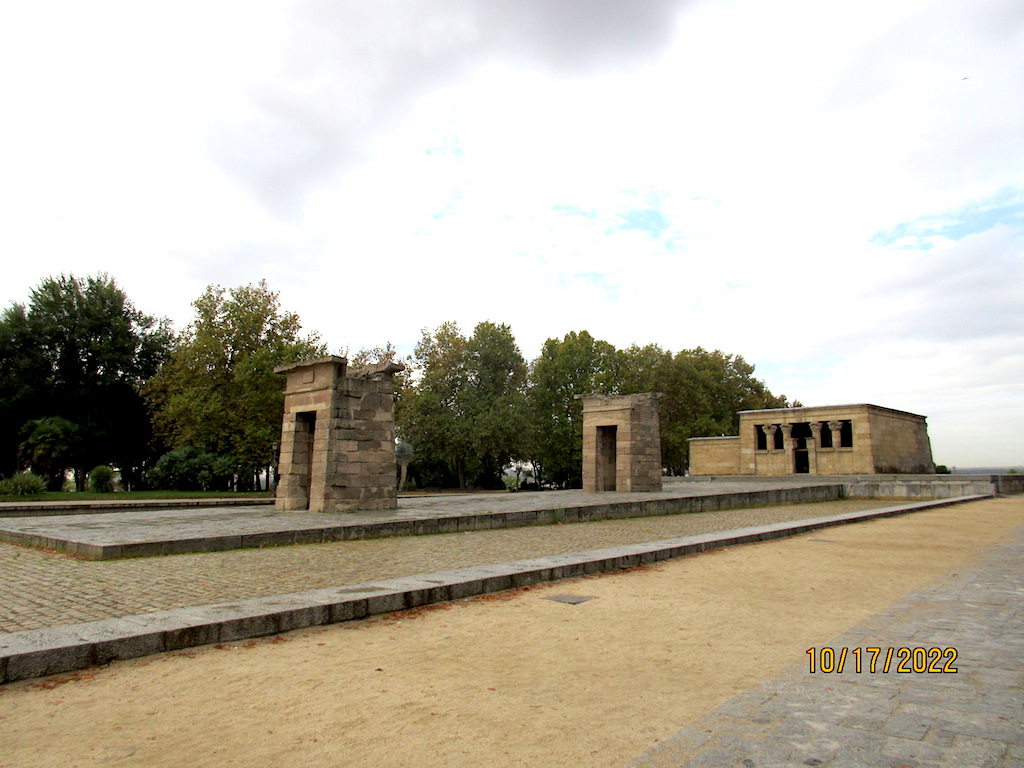
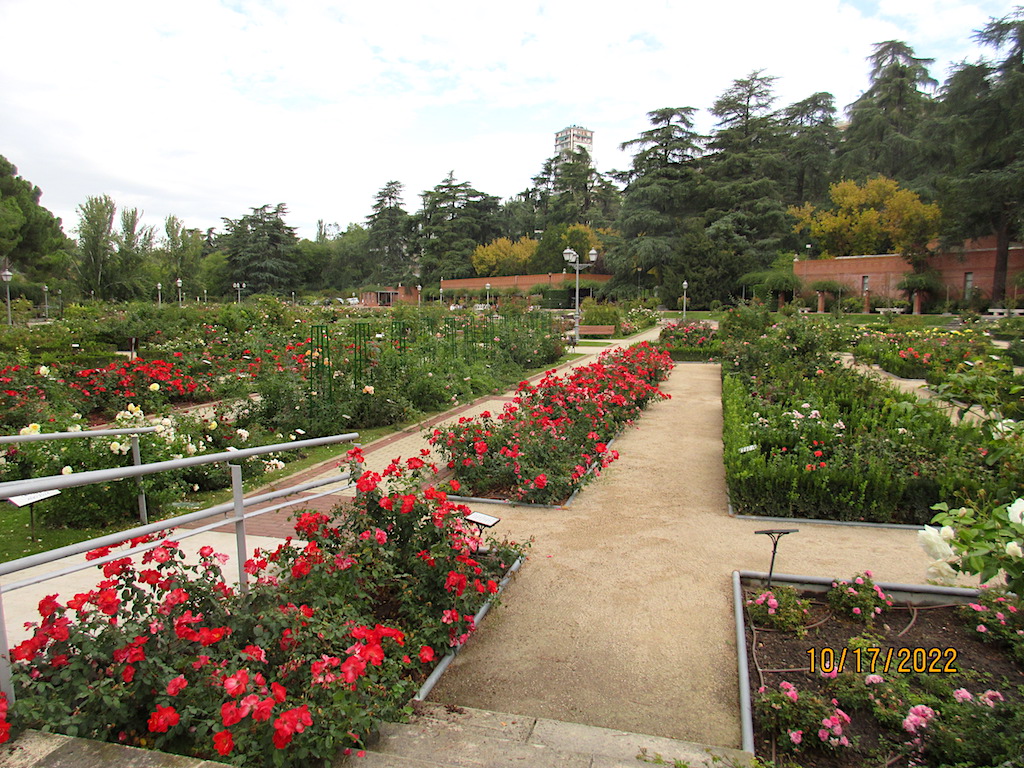

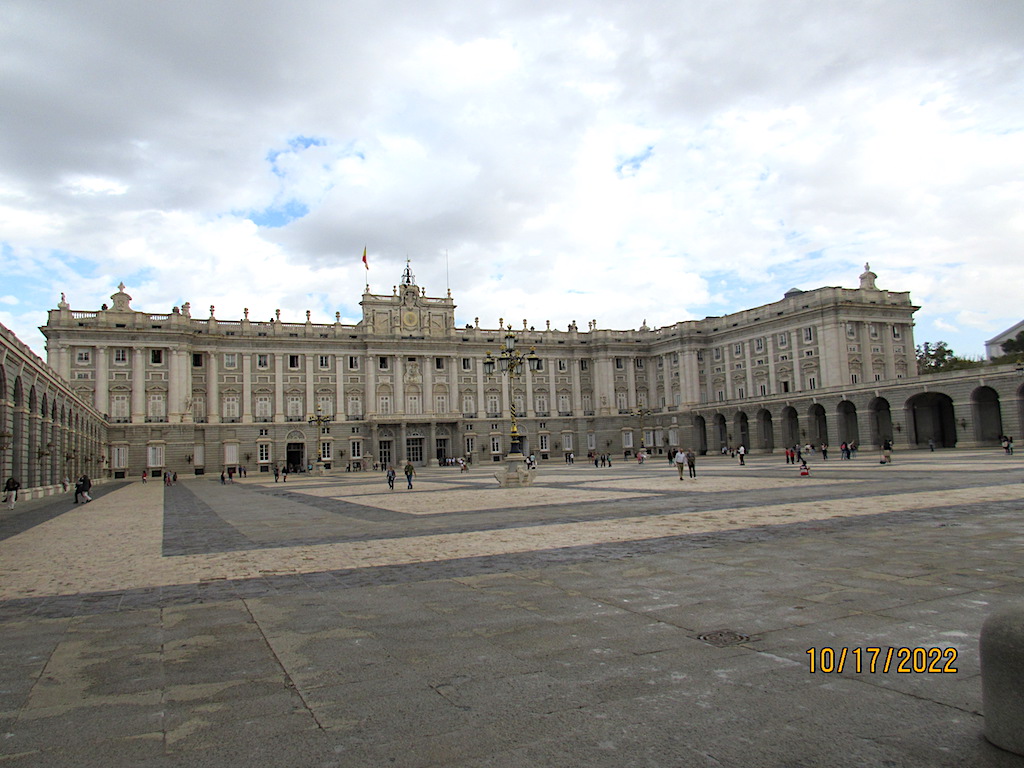
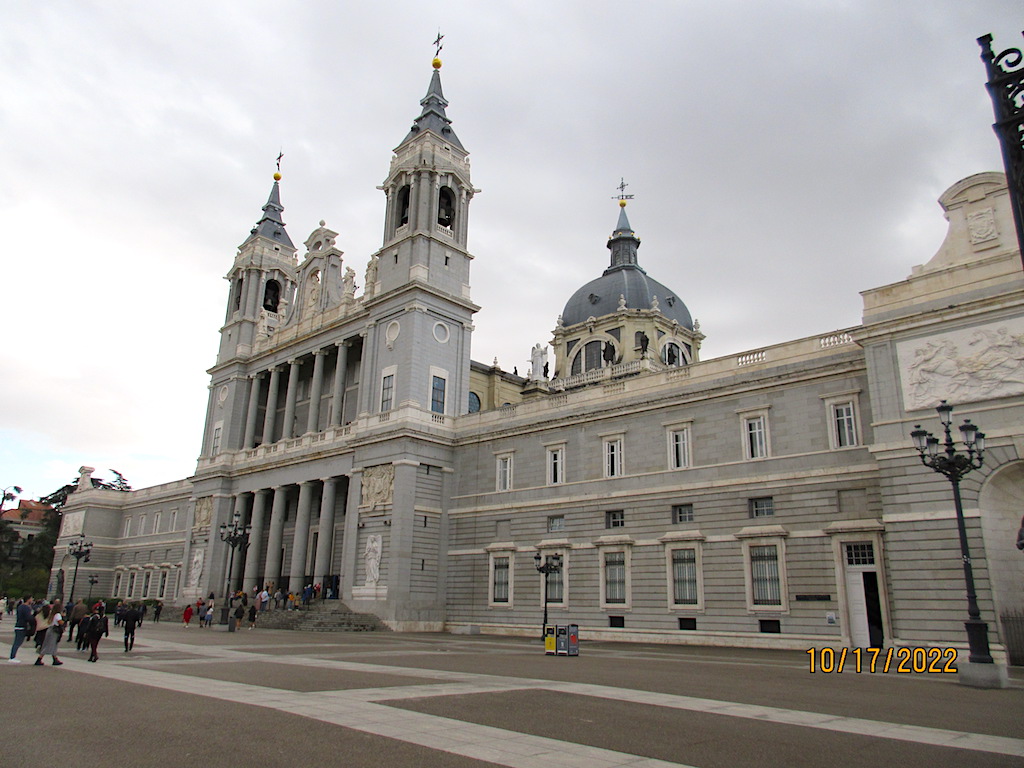
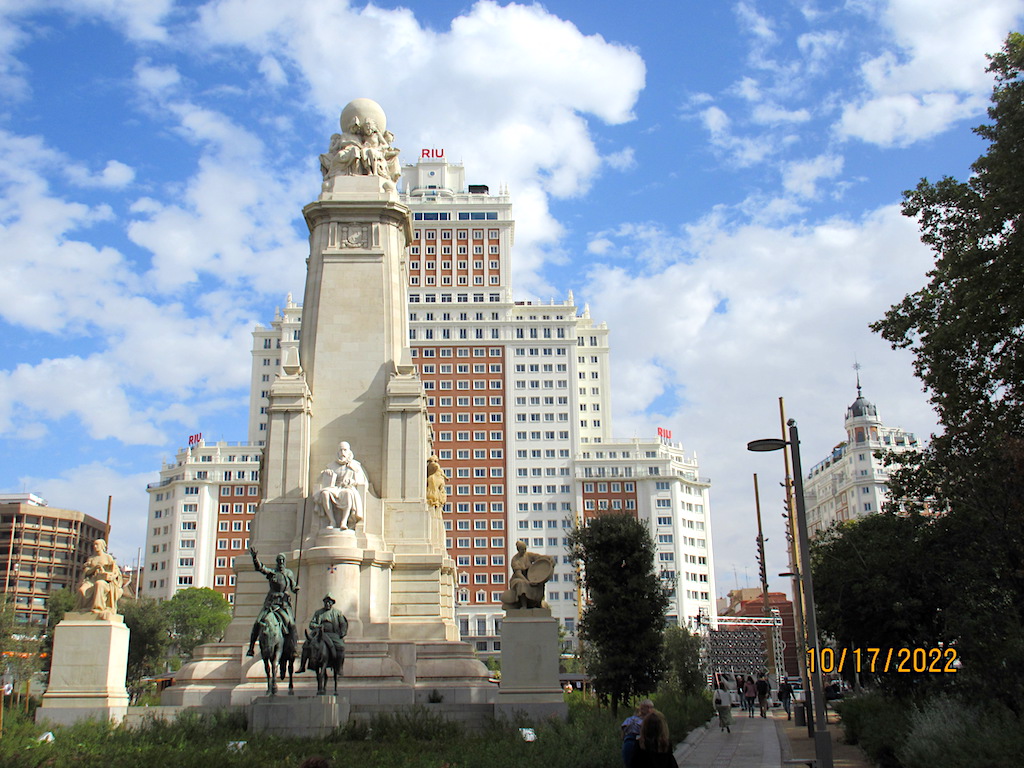
First stop this morning was the small ancient Egyptian Templo de Debod or Temple of Debod. The temple was first erected in Egypt in the early 2nd Century BC and over the years it was expanded to a small single-room chapel dedicated to the god Amun (god of wind). In 1960 during the construction of the Aswan High Dam in Egypt, Spain assisted with saving the temples of Abu Simbel. As a thank you from the Egyptian people, this small temple and two gates were given to Madrid. The temple was disassembled and moved to Madrid where it was reassembled. The temple stands in the Parque del Oeste or Western Park and was opened in 1972. Unfortunately, the only day the temple is not open to go inside is Monday, which is the day we came to see it.
Also, in the Western Park is a large rose garden that we checked out. The giant park was created in 1905 where there was once a trash dump. The rose garden was designed in 1955 by Ramon Ortiz, Madrid’s head gardener. The garden features about 600 different varieties of rose bushes. Every spring the park hosts an international rose show, and in 2006, it won the Garden of Excellence Award granted by the World Federation of Rose Societies, recognizing it as one of the exceptional rose gardens of the world. The roses were not at their prime at this time of year but many of the roses were still in bloom. The garden has many divided beds of roses, arbors covered with roses, ponds and fountains.
We then headed back to the Royal Palace that we had seen briefly yesterday for a closer look around. The Royal Palace, owned by the Spanish state, is the official residence of the Spanish royal family, although is now used only for state ceremonies. The palace is the largest in Europe with 3,418 rooms and 1,450,000 square feet of floor space. A palace was originally built on this site by Muhammad I between 860 and 880 but was severely damaged in 1476. The castle had been added onto and renovated many times through the years, until 1734 when the palace was once again destroyed by fire. After the palace was destroyed work began again to build a new palace which was later enlarged and renovated over the years. The building is quite regal looking and is very prominent in the city skyline as it sits on an elevated hill above the city.
Next door to the Royal Palace stands the Almudena Cathedral that had a groundbreaking in 1883 but was not completed until 1993. In that same year it was consecrated by Pope John Paul II. King Felipe VI, then crown prince, and Letizia Ortiz Rocasolano were married in the cathedral in 2004.
Our last stop was the Plaza de Espana which is a large public square with temporary structures where people were selling food and beverages, cheeses, jewelry and more. The square was recently renovated for over two years and is also the site of a monument to Miguel de Cervantes Saavedra, the famous Spanish author who wrote Don Quixote in 1605 prior to his death in 1615.
For dinner we met up with Ric and Kevin and headed out to a neighborhood restaurant called Casa Mono or Monkey House. The restaurant was very comfortable high ceilings, tons of black wrought iron decorative window frames and interesting objects of art. They had a large menu with all sorts of appetizers, entrees like Indian Chicken, roast boneless suckling pig and even a hamburger. Everyone was able to find something that they enjoyed and the food was good. Even better was that the prices were very reasonable including three-euro beers and large bottles of water.
